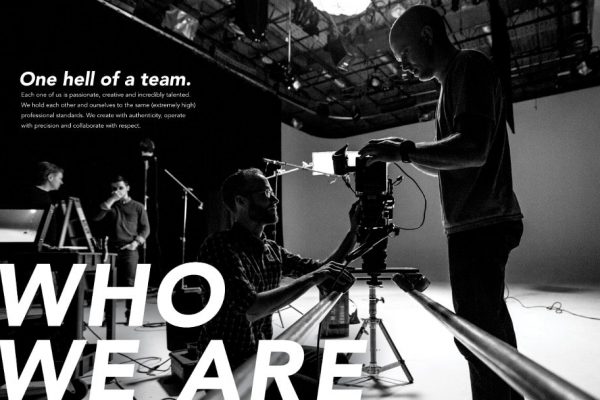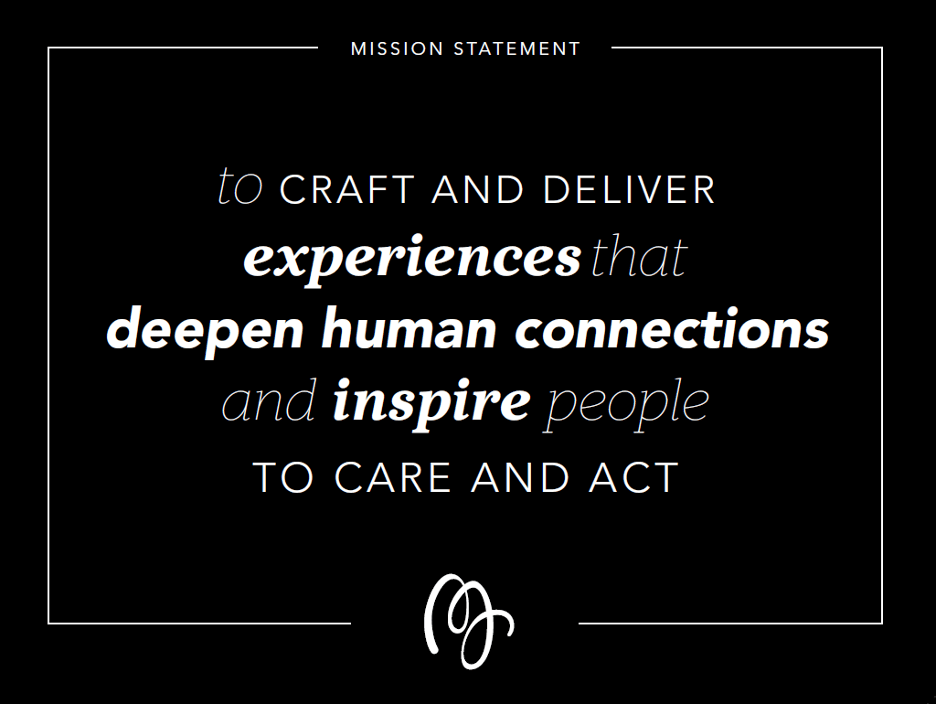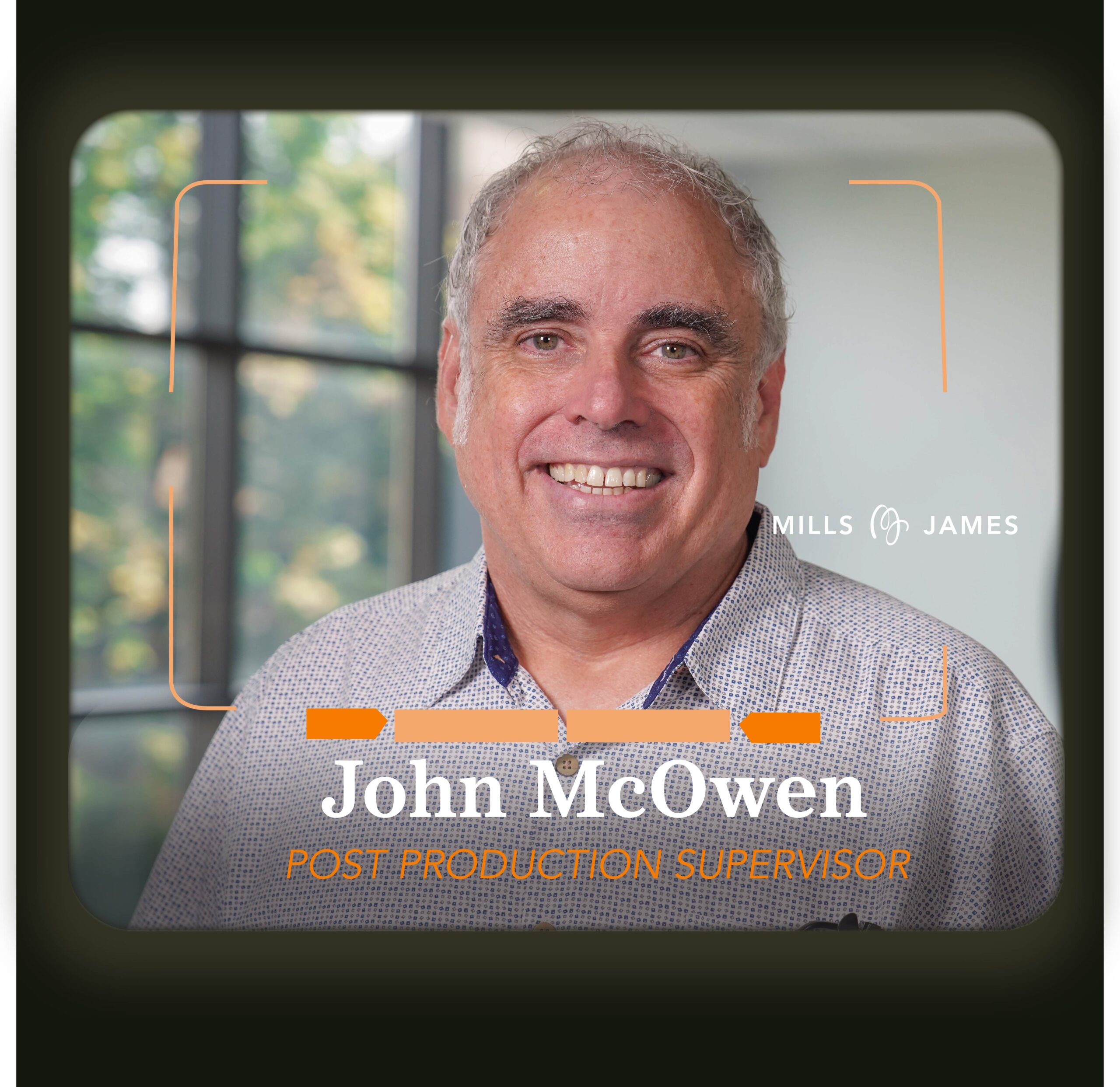
The 2010s | The Secret
Two events over the past 20 years have had the most impact on the company. One was scary and the other existential.
The Great Recession was the first event. Some of Mills James’ competitors washed out quickly, especially those with unreliable cashflow, weak balance sheets, or too much dependence on one client.
“Recessions teach you what is truly essential.”
You can interpret this line in one of two ways. The first way: define the ‘what’ in business-like terms. What number of employees are essential? What service lines are profitable, and which aren’t? What can the company do to diversify further? What technology trends should we embrace to stay ahead? What can we do to not only sustain client relationships but strengthen them for the future?
Mills James Managing Partner and COO Scott Lanum credits the company’s survival with the answer to this last question. The employees’ role with clients had been shifting for years—from production vendor to trusted advisor.
Scott analogizes this shift to something he instills in the Operations Department, “Understand what the client really needs and get them there. Your job is not to just mail their package; your job is to make sure their package arrives.”
The company was slowly becoming less of a production company and more of a strategic communication company with a giant warehouse of production firepower. In terms of the recession, the challenge was now to help clients achieve the same goals they always had, just more efficiently and in new ways (e.g., streaming meetings rather than traveling everyone to a central location).
Learning how to innovatively solve client problems was a lesson Ken and Cameron instilled in the company in the early years, and this mentality allowed the company to strengthen relationships through tough times, with big players such as the Ohio Lottery, P&G, L Brands, and other Columbus institutions.
The company’s key differentiator of having ‘everything under one roof’ also started to take on more resonance with clients.
Back to Ken’s line. The second way to determine “what is truly essential” is not to use business-like terms at all. It’s not even about the ‘what.’ It’s about the ‘why.’
Dynamics coincided in this decade to push the company in a very new direction, one macro and one micro. Companies all over the country were facing more skepticism about their products and pitches and just the general nobility of their capitalistic intentions. Attribute it to the speed of information, the power of social media, or the growing cynicism of younger people who saw generational outcomes that hurt their families and themselves. What emerged was an epic pushback. “I’m no longer buying what you’re selling.”
The calls to action that had existed since the 1950s — “buy buy buy” — were being met with a single-word response from millennials and others: Why? Why should I buy from you? Do you stand for things I value? Are you part of societal solutions or societal problems? And, thus began a new movement still gaining momentum: companies becoming more purpose-driven.

Mills James’ renewed focus and desire to be purpose-driven included a company rebrand in 2017.
The second impactful event was far more Mills James specific. The fear of becoming unmoored as a company with Ken and Cam retiring. Ken had officially decided to retire, and Cameron had started to plan his exit strategy as well.
Mills James President Arthur James explained, “We were a company that began with two owners, and now we have 180. We couldn’t just flip the switch. We had to develop a new operating system and find our north stars.”
In a word, Mills James needed to define its ‘why.’
One first step was to reflect on — and memorialize — the company’s essential values, many that had been intuitive since the beginning, just never written on a wall.
Connection, Accountability, Nurturing, and Growth, Trust, and Respect
We also have since defined a company mission:

The company’s mission statement was written by associates and adopted in 2018.
Before they passed the torch to the new leadership team, Ken and Cameron decided to focus on the first value: Trust. With so many individually managed departments, it was easy for Mills James to become siloed. The founders had mastered teamwork in a world where partnerships often fail and learned every successful relationship always begins with trust. It was time for leadership in transitioning from two guys to a team of ten:
- President, Arthur James
- CEO, Cameron James
- Chairman of the Board, Ken Mills
- Chief Operating Officer, Scott Lanum
- Chief Creative Officer, Rodrick Pauley
- Chief Financial Officer, Steve Spence
- Chief Sales and Marketing Officer, Mike Yearling
- Chief Hospitality Officer, Joe James
- Human Resources Director, Bob McWilliams
- Director of Client Services, Cincinnati, Tom Buten
“We went through a lot of team building to build trust in one another,” Cameron explained. They also got real about each leader’s strengths and weaknesses and worked with a business coach, Mary Rauchenstein, Chief Encouragement Officer at Leadership Edge Solutions, to refine the soft skills.
The journey from what to why pushed the entire leadership team through the succession process and prepared them for a decade full of their biggest growth yet.
Mills James had become a major player in Columbus, Ohio, but as they expanded into Cincinnati and Cleveland, they had to carve out entirely new niches and prove themselves all over again.
First was the Queen City. Having built a relationship inside the walls of P&G, the company decided to purchase a building in Covington in 2011 to pursue the broader Cincinnati production industry.

Next: The Land, where Mills James built a new office and studio after winning the daily draw broadcast contract with the Ohio Lottery Commission in 2013. Mills James was the new kid on the block again and had to learn how to grow business without 35 years of local presence.
If it weren’t for their relationship with P&G and OLC, they wouldn’t have been able to fuel either of these expansions.
Mills James chose investment decisions very carefully. But in many other ways, they had to learn how to be nimbler. And, more courageous.
The recession had nearly killed off freelance work, but with rising technology and new ways to collaborate, startups began reemerging and successfully competing with Mills James. Young players were in the game, and Mills James had to learn to be agile again to stand out. The company began hosting discussions with clients called Megatrends Dinners, where they learn what keeps clients up at night and seek frank feedback on the company’s strengths and opportunities, with the goal to out-boutique the boutiques.
The company always knew how to win with scale and high production value, but now the journey is evolving. “But if there’s one thing we’ve learned, it’s this: the goal hasn’t changed one bit,” says Mills James Chief Sales and Marketing Officer Mike Yearling. “Our company mission has always been to deliver breakthrough creative that changes the hearts and minds of our clients’ audiences. Our clients want that even more now.”
The journey now is about delivering breakthrough creative at any budget, and faster. You still have to break through the clutter in general and audiences’ highly tuned BS meters in particular. You have to break through a person’s left brain, right brain, and heart. Take internal communications for one. Just because you employ people doesn’t mean you can force them to care about a message. You must earn their affinities. It’s just that the budgets are tighter now, and the content needs to be cranked out with increasing velocity. Gone are the days of spending six months on a single precious video.
But you still have to stand out in a crowd, which begins and ends with your creative and your storytelling skills. Operational excellence has emerged as a major factor, as a statement of your cost efficiency if nothing else.
The Mills James events group embraced this challenge and rebranded in 2014 as the Mills James Experience Group (MJx). The group underwent serious restructuring changes to realign its focus on creative and operational excellence. They split the department into three categories: production, technology, and creative.

Their first test came with the President’s Cup proposal. Mills James decided to pitch something they had never done before. “The event was to take place at the new Columbus Commons,” recounted Mills James Chief Creative Officer Rodrick Pauley. “Attendance was massive (with a worldwide televised audience), and the client feared the spectators wouldn’t be able to see the stage and screens. So, we suggested projecting on the entire back façade of the Ohio Theater building. We’d raised our creative and technical game and wanted to express it somehow. This was the first real statement of our new strength.”
More events and video work started to come in through the company’s ability to either deliver compelling creative or prove operational excellence.
On the operational front, Mills James most recently was able to land the contract to be the Greater Columbus Convention Center’s in-house production company. And continue to grow on-site AV services to hospitality properties all over Ohio — allowing the company to double their warehouse footprint in 2019.
On the creative front, the answer is more complicated. Why? Because when we ask our people to evaluate their own creative, they always think it somehow could have been better, no matter the positive feedback, awards, or resulting business growth.
Regardless, it’s an exciting mindset to take into the next 36 years.


